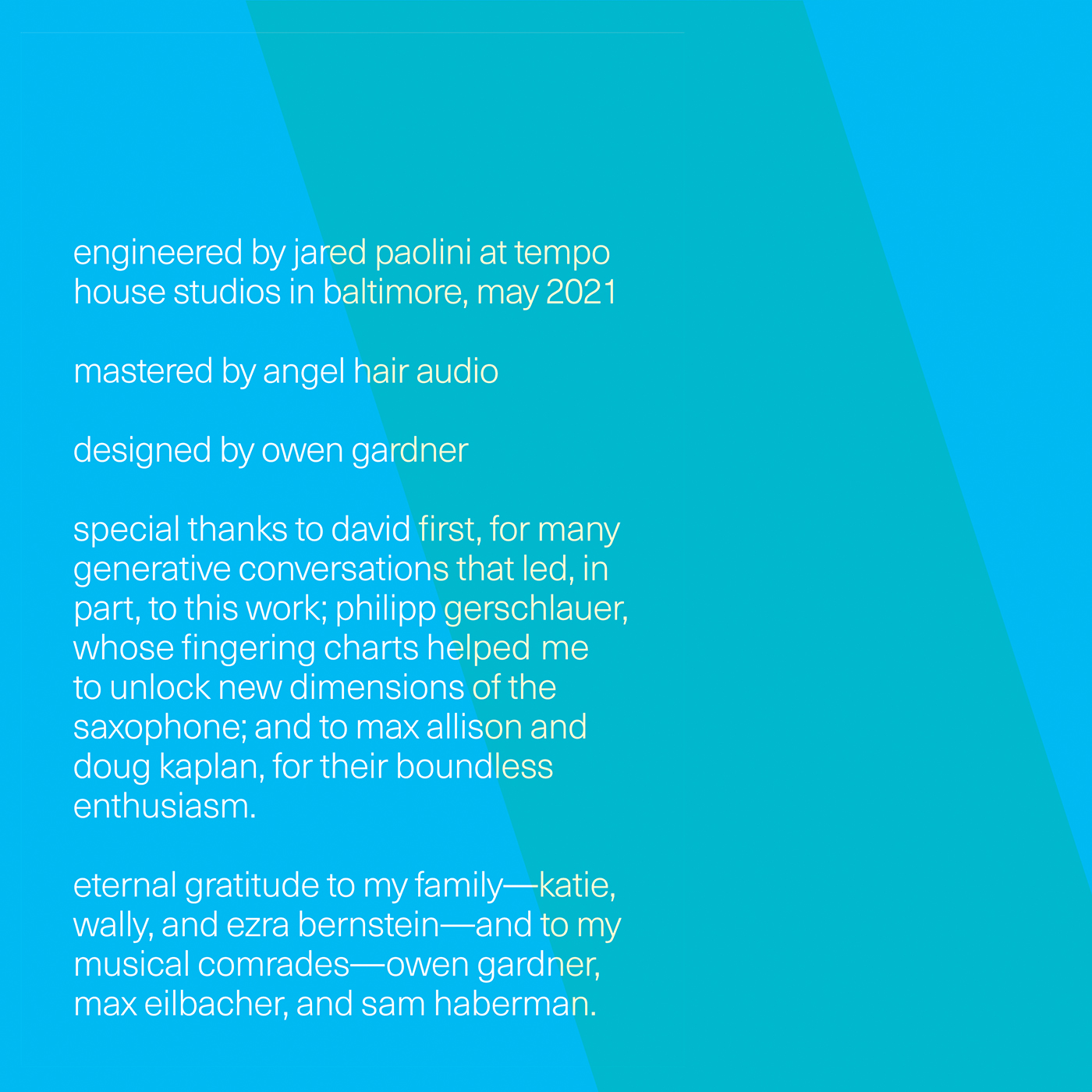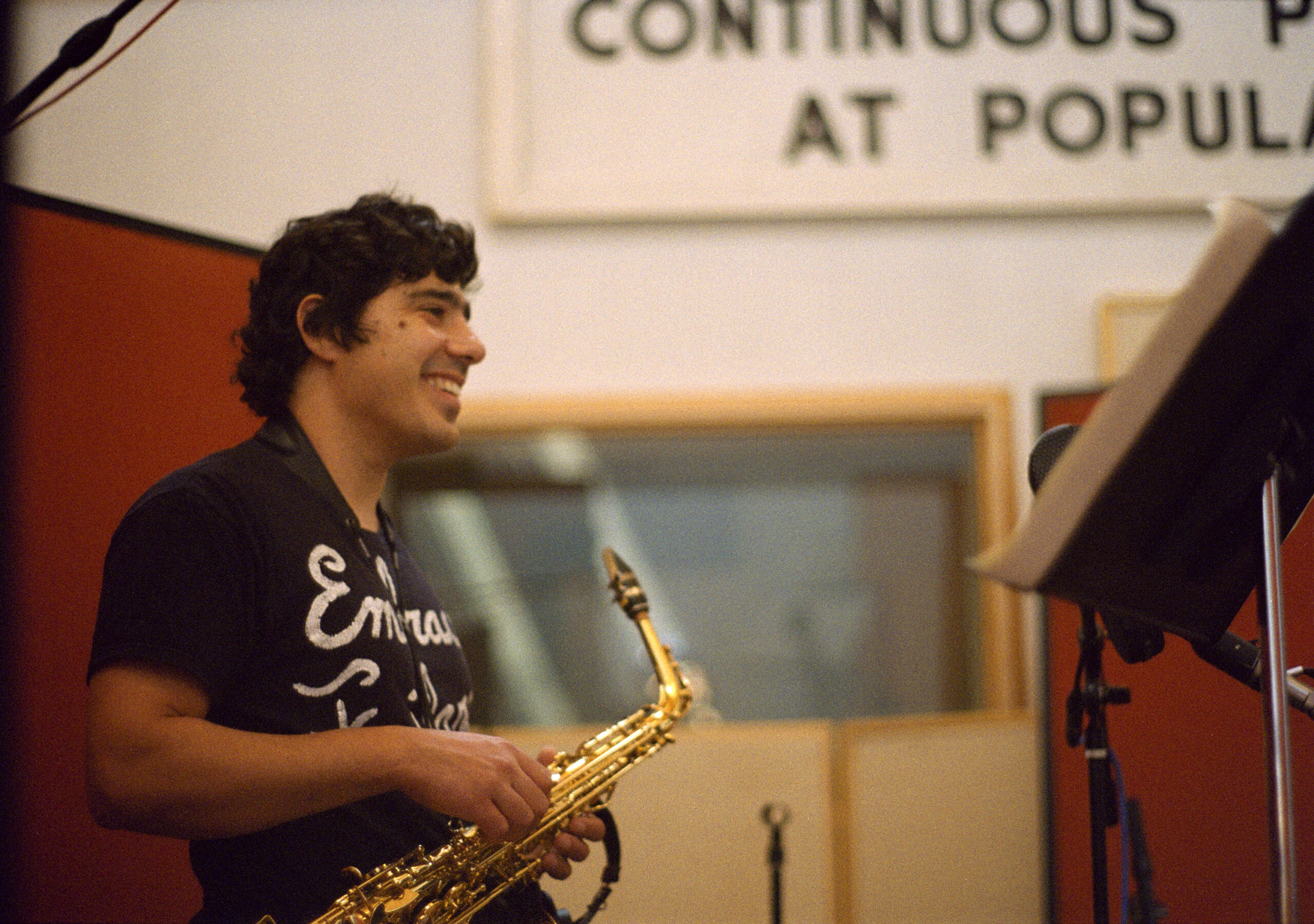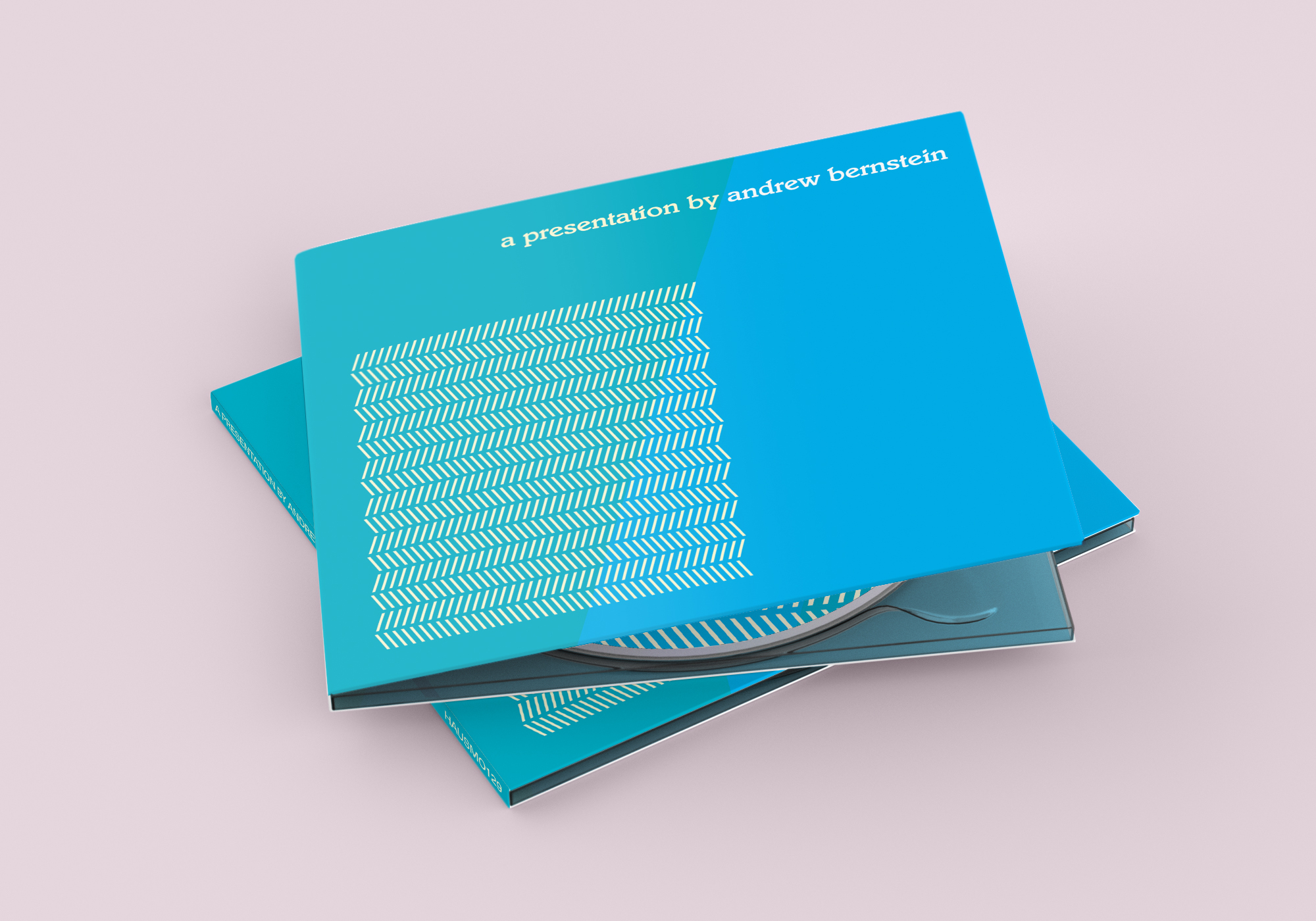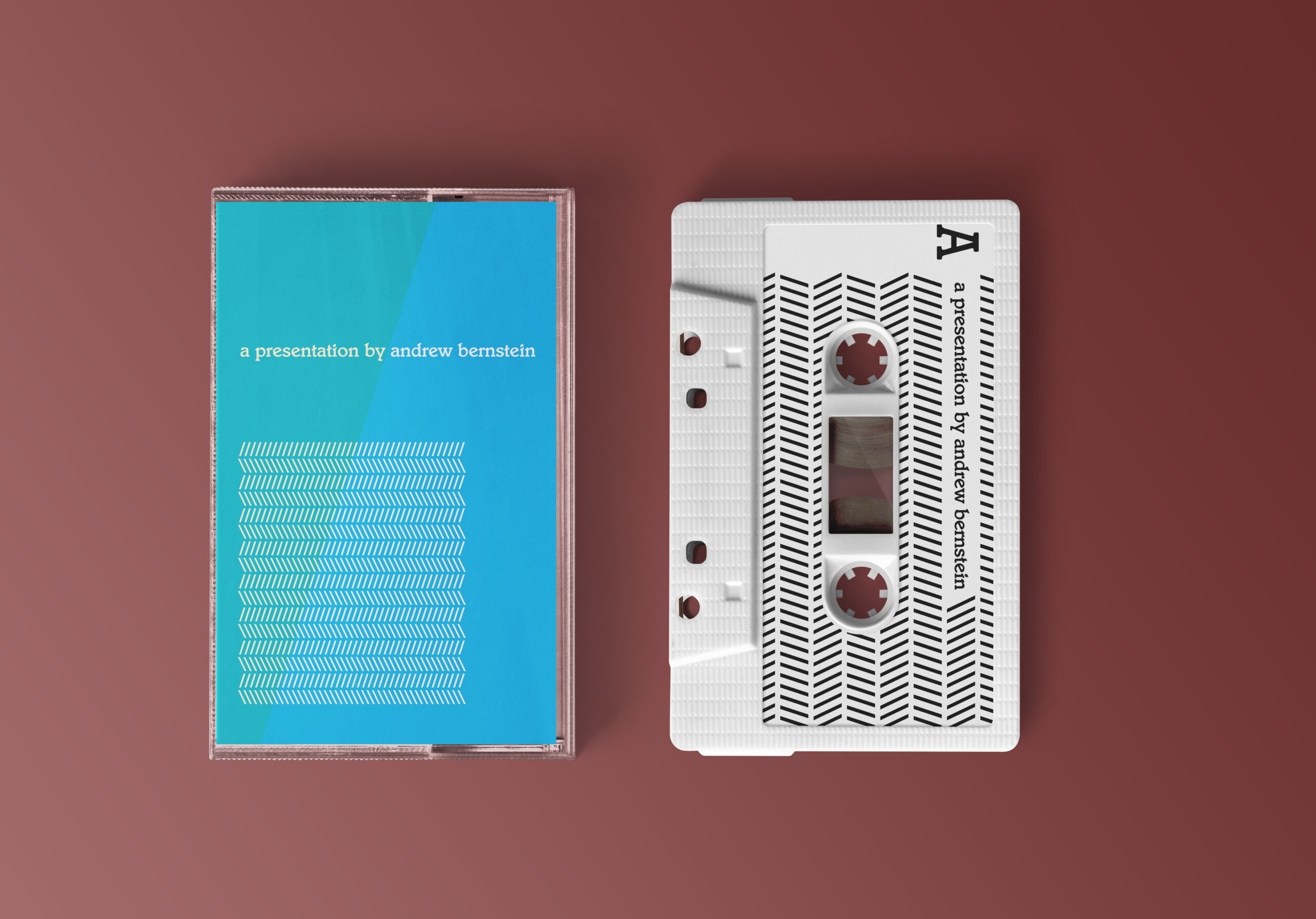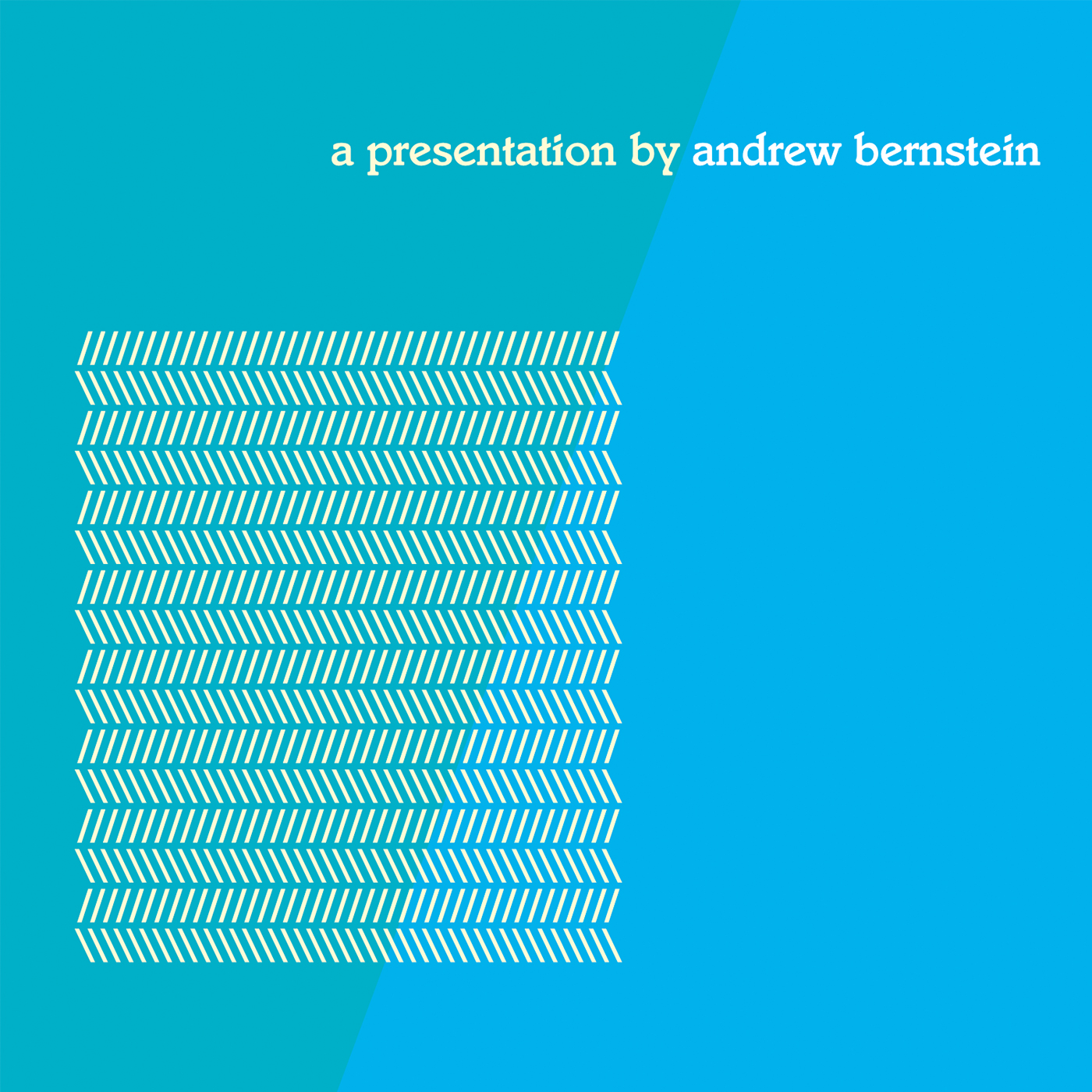To be released on CD, cassette, and digitally on 5/20/22. Artwork by Owen Gardner. CD packaged in a digipak. C58 – white cassette with black imprints. This is the catalog page with album information and artwork. To purchase, head to our Bandcamp page.
Composer / saxophonist / multi-instrumentalist Andrew Bernstein has been an essential part of the Baltimore experimental music scene as a member of avant-rock champions Horse Lords, a frequent collaborator with acts like Dan Deacon and Matmos, and an erstwhile member of the High Zero Collective – Baltimore’s premier experimental music presenter. Based in Baltimore for much of the last two decades, he currently resides with his family in Germany. Under his own name, Bernstein composes music focused on the material of sound, typically oriented around the tuning system of just intonation: the selection of notes based on the physical properties of sound which yields frequencies that provide more “perfect” harmonies outside of the capabilities of the 12-tone scales that appear in Western music in idioms ranging from classical / orchestral composition, to mainstream pop, and most everything in between. Bernstein’s work can swell into flights of virtuosic sheets-of-sound overload or stretch individual tones into time-dilating durational exercises that emphasize the relationships between overtones and explore the unique harmonic series that he lays out for each piece.
Following his past releases on Hausu Mountain — Cult Appeal (HAUSMO39, 2015) and An Exploded View of Time (HAUSMO74, 2018) — Bernstein returns to the label with a new album called a presentation. Oriented around his long-form, layered saxophone performances and presented with occasional drone-based accompaniment from electronic sound sources, the album finds the artist pushing the limits of both his compositional ideas and the physical reality of his craft. While Bernstein channeled near-inhuman deluges of arpeggios into ever-shifting landscapes on An Exploded View of Time, the pieces featured on a presentation shift his practice towards a state of tempered, finely choreographed stasis to bend reality around him in the opposite direction. He presents a seemingly endless field of sustained tones and foregrounds the evolving relationship between each small cluster of notes that he selects. The result proves just as spellbinding as Bernstein’s work on the more rhythmically busy side of the spectrum, showcasing his patience as a composer, his deep tutelage in the properties of overtones and microtonal harmonies, and the improbable precision with which he can produce sounds from his saxophone — an instrument not necessarily designed to easily achieve these specific frequencies / pitches — in order to match the ideas in his head.
Andrew Bernstein cites forbears like Pauline Oliveros, Maryanne Amacher, James Tenney, and La Monte Young as inspiration for a presentation. The influence of these pioneers of minimalism and deep listening and the generations of artists that follow them appears in the droning yet slowly cycling arcs of his compositions that wind their way through diverse moods based on the notes that he presents at any moment. Harnessing the harmonies that just intonation note systems and their overtones are capable of producing together, Bernstein’s music crests through passages of sublime triumph, pensive reflection, and turbulence that induces a state of queasy, altogether brain-warping uneasiness. The moments when two or more of his overtones lock together yield unfamiliar intervals that quiver together at microscopic levels of intricacy. Bernstein’s utilization of just intonation and its capability to produce sonic phenomena far outside of the limits of the equal temperament used in most Western music results in compositions that can’t be easily described in terms of the physical sensations that they elicit: the work is at once deeply affecting and alien in nature, holistic in its approach yet unafraid to streak off into unknown territories.
Discussing the ideas that ground his approach to composing and performing the pieces that appear on the album, Andrew Bernstein had this to say:
“a presentation is a meditation on the material of sound. Sound is always changing, always becoming, always in flux, by its very nature. Sound is nonrepresentational, it does not re-present, but simply presents change over time. By foregrounding the material of sound and the constant flux it embodies, we can learn lessons that are applicable beyond sound or music. Sound can help us think more deeply about change, impermanence, multiplicity and intersectionality, on a macro-scale of the universe, the human-scale of communities and individuals, and the micro-scale of individual cells or atoms. I am fascinated by the experience of sound, and think it can be used as a metaphor to get closer to some of these deeper truths about existence.”
